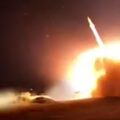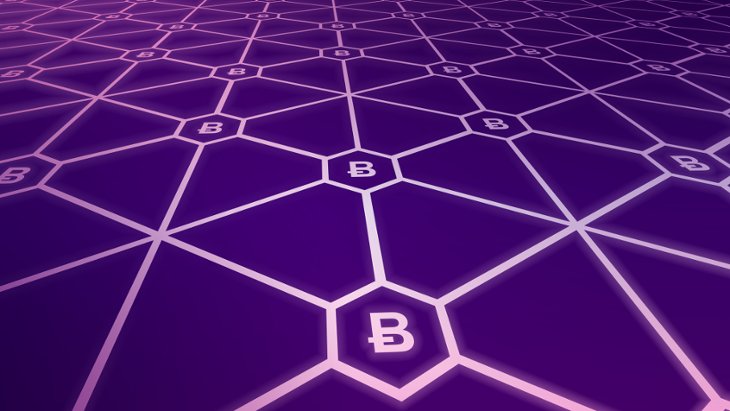 Iran’s Attack on Israel
Iran’s Attack on Israel


7 min read
Long before the advent of Bitcoin, the Torah blockchain has proved to be robust and enduring.
How do we know that we are still practicing the same Torah given by God to Moses on Mount Sinai 3300 years ago? Maybe along the way it’s become corrupted or altered? How do we know that all the additions made by the Rabbis are part of God’s original intent? Maybe our Judaism today is so far removed from Sinai that even Moses wouldn’t recognize its authenticity?
An answer lies in the secret of the blockchain.
You have probably heard of the blockchain and its primary use – Bitcoin. But few people actually understand how it works. Here's how.
Throughout life we use ledgers that record transactions. Take your bank account, for example. Back in the day when you would walk into the bank, you would record each deposit and withdrawal in your little ledger book. Nowadays, it’s all done on computer and you receive a monthly ledger statement.
Your bank is basically a middle-man, taking your deposit money and lending it out to borrowers on your behalf. If you could lend the money directly, you would also use a ledger to record the transaction. The only difference is that, without the middle-man, either party could forge the ledger, leading to a dispute between the two parties. Your bank safeguards the trustworthiness of the transaction.
But let’s say we could introduce a system whereby every transaction was verified by millions of people around the world instantly. Any individual attempting to forge a transaction would be flagged immediately by every participant in the system and the transaction would be rejected. Since we have millions of verifiers, we no longer need the stamp of approval of the middle-man.
The fact that so many people are watching doesn’t mean business can’t get done. Transactions still take place. But any changes introduced must be verified and approved by the entire system.
Moses wrote thirteen Torah scrolls. If any tribe were to attempt to change the Torah, all the others would flag the ‘transaction’ as invalid and reject it.
That’s the blockchain – it’s a gigantic, global ledger. Every time a commodity, such as Bitcoin, changes hands, every ‘node’ in the blockchain – millions of computers across the globe connected via the internet – must approve the validity of the transaction. The new system is now decentralized, power is peer-to-peer and distributed, and the system is fortified by the validation of the consensus of all the users in the system.
The blockchain has been a foundation of Judaism from the time of Moses. The Midrash teaches:
Once Moshe knew that he was going to die that day, what did he do? Rabbi Yannai says: He wrote thirteen Torah Scrolls – twelve for each of the twelve tribes, and one that he placed in the Ark. For if someone should come and attempt to forge something, they would find the original in the Ark (Midrash Rabba, Deuteronomy, 9:9).
Essentially, the Midrash is describing the first blockchain. If there were only one copy of the Torah, it would be easy to forge. But Moses wrote thirteen Torah scrolls. If any tribe were to attempt to change the Torah, all the others would flag the ‘transaction’ as invalid and reject it.
Maimonides describes the transmission of the Torah:
All of the mitzvot (commandments) which were given to Moshe at Sinai were given with their explanation, as it says (Ex.24:12), “I have given you the Tablets of Stone and the Torah and the Mitzvah.” Torah refers to the Written Torah, and Mitzvah refers to the explanation. This Mitzvah is called the Oral Torah.
The entire Torah was written by Moshe Rabbeinu by his own hand, before his passing. He gave a Scroll to each and every tribe, and one scroll he placed in the Ark as testimony. The ‘Mitzvah,’ which is the explanation of the Torah, he did not write down, but he instructed it to the Elders and Joshua and the rest of all Israel. It is therefore called the Oral Torah (Mishnah Torah, Introduction).
Maimonides is building on the Midrash with a powerful, fundamental addition: the element of the Oral Torah. Not only is the Written Torah immutable, due the multiple copies on the blockchain, but so too is the Oral Torah. Moses added the Oral Torah to the blockchain system by teaching it to multiple parties: Joshua, the Elders, and all of Israel. Now if anyone were to attempt to alter its content, it would have to be accepted by the entire diffuse system.
The Oral Torah does undergo development, as new legal cases arise all the time. Just think about some contemporary issues, from questions about identifying parenthood in the case of surrogacy to the permissibility of online business transactions on Shabbat, to name just a couple. When God gave the Torah to Moses, He provided guiding principles as to how to develop the Law, based on rules of legal precedent and methods of interpretation and extrapolation.
So if a rabbi wanted to make a change to the system due to a challenge that had arisen, they posted the ‘transaction’ to the Torah blockchain, which required approval by all the ‘nodes’. If the system accepted it, it became part of the global tradition of Judaism. If the consensus did not deem the transaction to be valid, it was rejected. And the system remained intact.
The best example of our consensus-based Torah system is the Talmud. Despite its myriad debates around minutiae of Jewish law, our Sages agreed upon a system of determining the final, bottom-line halacha, which then was deemed standard Jewish practice. At the same time, despite the establishment of universally-accepted practices, Judaism has never shied away from debate or attempted to hide minority opinions – they remain enshrined in our tradition for posterity (See e.g. Raavad on Eduyot 1:5).
This process has kept our tradition intact throughout the millennia, even when our people have been exiled to the four corners of the Earth. As novel situations have arisen, our Rabbis have not hesitated to respond to those challenges. Nevertheless, Judaism prides itself on the paucity of difference between Jewish practice from Sefard to Ashkenaz, and everywhere in between. While people tend to think that the different parts of the Jewish world were completely separated from one another, it’s simply not the case. We always remained in close contact, and travel between communities happened regularly. One of the greatest medieval Ashkenazi rabbis, Rabbeinu Asher, for example, was born in Cologne, and later appointed to the community of Toledo, Spain. And, Maimonides kept a correspondence with the Jewish community in Yemen.
At various times in our history, movements attempting radical reinterpretations of the tradition have appeared. However, when their propositions differed with the letter of the law or even the spirit of the law, they have been rejected by the system. Like any other field of expertise, most people – rabbis included – are not sufficiently qualified to engage in major ‘transactions.’ It takes a lifetime of dedication to the Jewish people, proven proficiency in the entire corpus of Torah knowledge, and widespread respect as an authority in Jewish law to begin to earn the ability and right to be part of the grand Torah conversation.
From the time of Moses until this very day, we have been blessed with towering giants of Torah, possessing the wisdom and sagacity to maintain the strength and sanctity of our tradition. These leaders of each generation have grappled with every new situation with caution, sensitivity, and a foreboding sense of the awesomeness of their task. Their piety, encyclopaedic knowledge, and, above-all, their deep commitment to the mesorah (tradition) have provided the foundation for any transaction they have entered into the system. As a result, long before the advent of Bitcoin, the Torah blockchain has proved to be robust and enduring.
